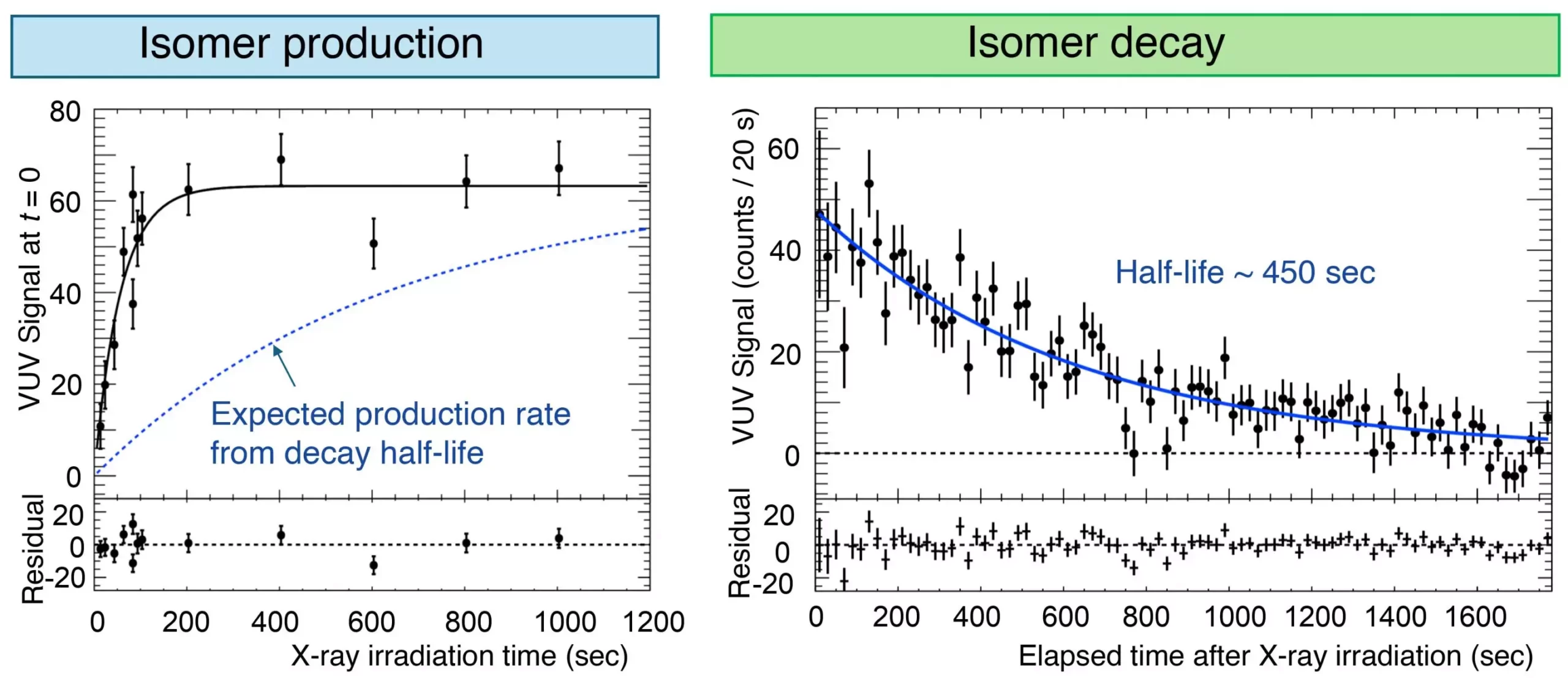In the realm of scientific innovation, the pursuit of ever-higher precision in time measurement stands as a pivotal endeavor. At the forefront of this quest are atomic clocks, which have long been the gold standard for quantifying the second, the most fundamental unit of time. These sophisticated instruments operate on principles akin to traditional pendulum clocks, relying on the natural oscillations of electrons within atoms. However, the quest for an even more reliable timekeeping mechanism has led to the exploration of nuclear clocks, which delve into the intricate dynamics of atomic nuclei rather than electrons.
Nuclear clocks harness the unique properties of atomic nuclei, offering a potential breakthrough in precision timekeeping. One of the most promising candidates for future nuclear clocks is the 229Th isotope, which features a half-life of approximately 103 seconds and a low excitation energy. These characteristics make it particularly suitable for excitation using vacuum ultraviolet (VUV) lasers, thus presenting an accurate reference transition for nuclear clock technology.
The implications of nuclear clocks extend well beyond traditional applications. These advanced timekeeping devices could redefine capabilities in fields such as solid-state metrology, fundamental physics research, and the development of portable gravity sensors. As scientists continue to delve into the properties of the 229Th isomer, understanding its isomeric energy, half-life, and excitation decay dynamics becomes imperative.
An exciting milestone in this field has emerged from research conducted by Assistant Professor Takahiro Hiraki and his team at Okayama University, Japan. Their recent work, published in *Nature Communications*, investigates the population dynamics of the 229Th isomeric state and seeks to detect its radiative decay effectively. To facilitate these experiments, the researchers synthesized 229Th-doped VUV transparent CaF2 crystals, which played a crucial role in controlling the isomeric state population using X-ray techniques.
In an illustrative statement highlighting the significance of their research, Professor Hiraki noted, “Our group is working on fundamental physics using atoms and lasers. To realize a solid-state nuclear clock using 229Th, it is necessary to control the excitation and de-excitation state of the nucleus.” This commitment to understanding and harnessing nuclear properties reflects a significant stride toward the realization of a functional nuclear clock.
The research team conducted groundbreaking experiments to explore the radiative decay processes within the 229Th nuclei. By utilizing a resonant X-ray beam, they successfully induced excitation from the ground state of the 229Th nucleus to its isomeric state. The findings revealed that the doped 229Th nuclei exhibited radiative decay back to their ground state; during this process, they emitted VUV photons.
One particularly noteworthy discovery from this study was the fast decay observed in the isomeric state when subjected to X-ray irradiation. The team identified a phenomenon termed “X-ray quenching,” which allows for the controlled de-population of the isomeric state on demand. This capacity for controlled quenching is expected to be pivotal in advancing nuclear clock technology, hinting at broader applications in precision measurement and navigation systems.
The potential applications of nuclear optical clocks are captivating. Assistant Professor Hiraki emphasized the transformative possibilities by stating, “When the nuclear clock under development is completed, it will enable us to test whether ‘physical constants,’ especially fine structure constants, which were previously believed to remain unchanged, might vary over time.” This idea not only challenges conventional scientific thought but also opens the door to uncharted territories in the field of fundamental physics.
As researchers like Hiraki and his team continue to refine the techniques and technologies associated with nuclear clocks, we stand on the threshold of a new era in timekeeping. These developments may not only reshape our understanding of time but also fundamentally alter how we perceive the constants of nature, ushering in a new chapter in both technology and science.

